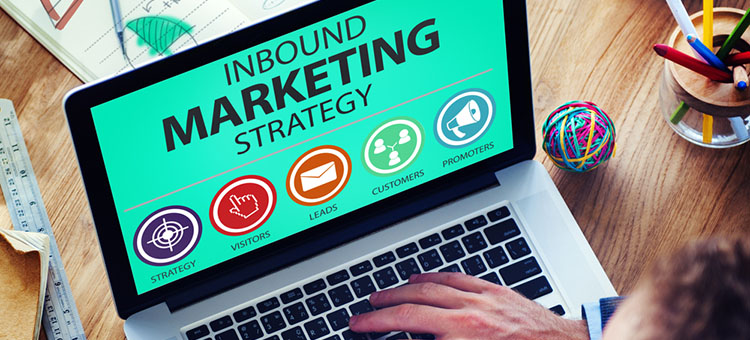The Future's inbound

Inbound marketing is beautifully self-explanatory, in that it refers to marketing activity that grabs the customer’s attention, earns their interest, introduces them to your company and directs them to your website. Put simply, they come to you because your marketing has reached out to them.
There are many different ways to run an effective inbound marketing plan, from informative advertising to real-time conversations, all of which add value and integrity to your brand. Below are some of our favourite examples, and they work best when combined as part of a comprehensive strategy.
Website.
Your website is the foundation of all of your digital activity. It’s where your email campaigns, advertising activity and social media should be sending people so that they can find exactly what they need to take the next step with your business. Despite this, a recent survey reported that up to 40% of small-to-medium sized businesses don’t have a website, which means that many potential enquiries will never convert into sales. We cannot stress enough how important it is that your website is up to date, expertly designed and optimised for mobile, making the user experience smooth and stress-free.
Content.
You’ve surely heard the maxim “content is king” that’s being thrown around left, right and centre. However, just because it’s becoming an overused expression, it doesn’t mean that its substance is any less potent. Content really is an excellent way to lead people toward your site, especially when it’s unique, well written and has a clear call to action. Content can include blog posts, images, infographics, polls, podcasts, downloadable resources and anything else that gets visitors engaging more thoroughly with your brand. Plus if you give people a freebie, such as a nugget of advice or a design template, chances are that their repeat visits will convert into repeat sales.
Social media.
Remember when Facebook was for posting photos of your dinner and Twitter was mainly used for talking about The X Factor? Okay, so that’s still the case, but social media channels have become a gateway to not only customer engagement but also employee advocacy. If you can get people talking about your product or service in a positive way on their personal accounts, you’ve achieved the digital equivalent of having your logo worn on T-shirts. Except it’s more than that: rather than simply endorsing your brand, people can give personal insight into their customer experience, recommend you in as few or as many words as they wish, and even open a dialogue with your company in a public arena where anyone can get involved. Social media is a truly powerful tool for creating inbound enquiries, and the more you put in, the more you get out.
PPC advertising.
Pay-per-click advertising is becoming increasingly important to modern marketing. Only a few years ago, PPC was restricted to websites and search engines; today, companies invest significantly in PPC advertising hosted on social media websites, including Facebook, Twitter, LinkedIn and Instagram. We strongly recommend using PPC to spread awareness of valuable content and useful downloads that will truly help people to improve their business. This breeds trust and builds requirements, which will more than likely translate into new customers.
Create your own strategy.
If you're getting all of the above right, your website will naturally rank higher due to an effective inbound strategy. However, this list isn’t exhaustive, so think of other ways to lead people to your website and get cracking! We’d also love to hear your ideas, so feel free to post them on our Facebook page.
